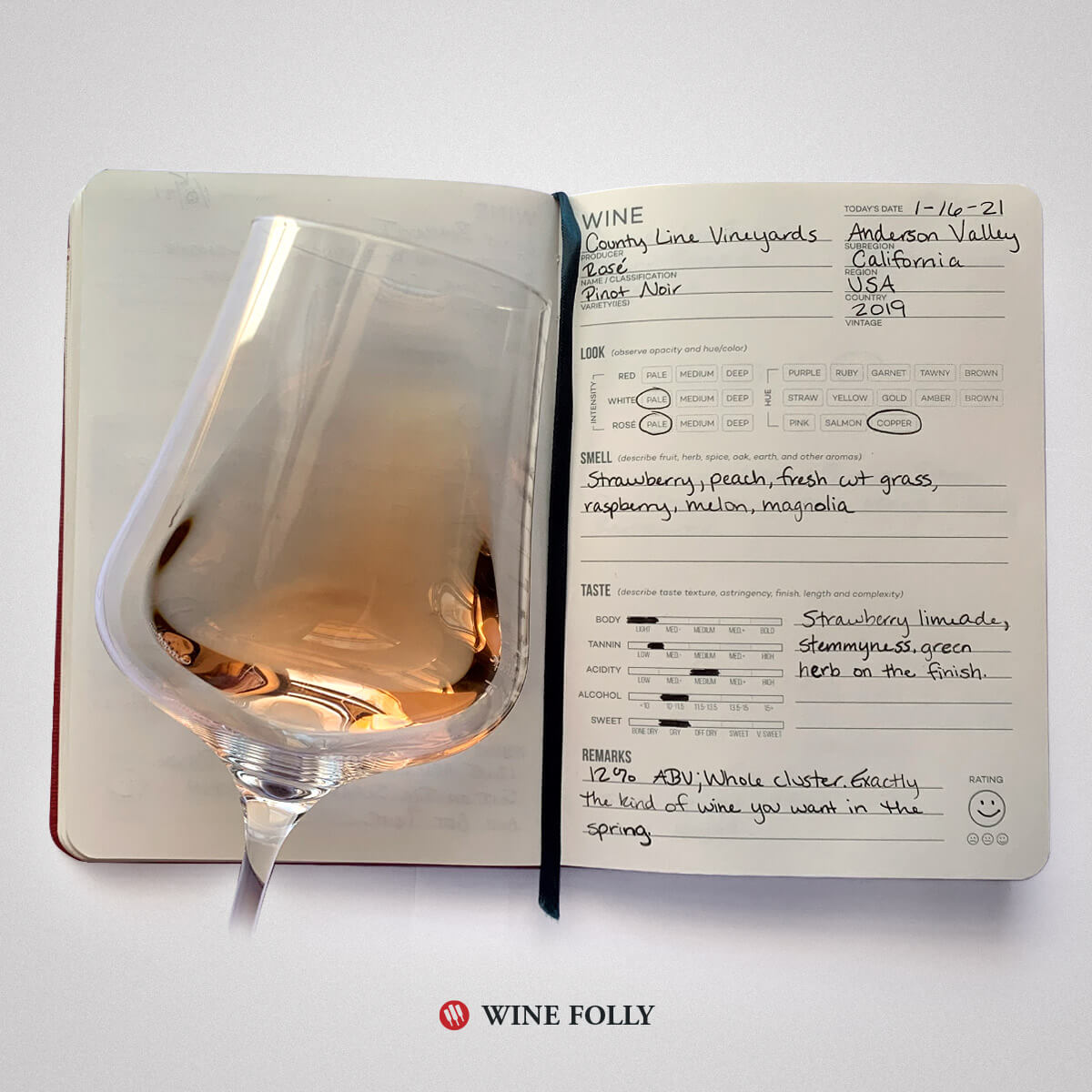We’ve talked about Pinot Noir in the past: anyone who loves wine is capable of talking about this grape until their faces turn blue. We know it makes amazing reds, whites, and takes part in some of the most popular sparklers of all time. But what about rosé?
Is rosé wine, so often relegated to the status of “wine for soccer moms,” just as capable of the complexity and “je ne sais quoi” factor that other wines are applauded for? Even rosé made with Pinot Noir? We’re going to find out.
What is the Tasting Challenge? The challenge is a way to improve your wine palate each week with 34 wines from 12 countries — The Wine Tasting Challenge.
While Pinot Noir is a popular grape for rosé, it’s far from the only one used to make this lovely pink libation. In fact, everything from Grenache to Zinfandel can be found in variations of rosé all over the world.
Pinot Noir rosé is highly regarded for its fruit forward characteristics, as well as a bright acidity – just the sort of thing that goes beautifully with summer excursions and long days at the beach. And maybe it’s the colder weather, but that sort of thing really appeals to us right now.
We went with a Pinot Noir rosé from California. More specifically, it came from California’s Anderson Valley region, which is known for its cool climate: ideal for lighter, sharper grapes like Riesling, Gewürztraminer, and, of course, Pinot Noir.
Plus: this particular wine is “whole cluster”, which should add a whole other level of complexity and even aging potential.

2019 County Line Vineyards Rosé
Look: Pale Copper.
Aromas: Strawberry, peach, fresh cut grass, raspberry, melon, and magnolia.
On The Palate: Immediately hit with a rush of strawberry limeade: both fruity and sharp on the palate. That then transformed to something of a green stemmy-ness on the finish.
Food Pairing: Strawberry-Rhubarb pie, some Gouda cheese, chicken tacos, or a nice, thick slice of ham.
What We Learned About American Pinot Noir Rosé
While early Italians may have known the Anderson Valley as an ideal spot for their Zinfandel grapes, the rugged coastline of Mendocino County has grown into a reputation for higher acidity sparklers, Chardonnay, and Pinot Noir.
And if a red wine isn’t possible due to bad weather, these Pinots are easily (and wonderfully) made into rosé: a true win-win.
Just like in our Crémant challenge, learning about American rosé, even when you narrow it down to Pinot Noir, is an enormous task.
But there are a few factors that definitely set American Pinot Noir rosé apart from its seemingly endless number of French cousins.
These wines are driven by fruit and have a more distinct sense of body, as opposed to the lighter, more mineral quality of a Provence rosé.
And with the use of “whole cluster” in these wines (a tactic that is gaining in popularity), you can even expect to see an evolution of aroma and flavor as the wine ages.
Last Impressions
While we’re not necessarily advocates for only drinking certain wines during certain seasons, this is the sort of bottle that reminds you why rosé is so popular in the spring and summer. It’s bright, bouncy, and fragrant as a garden of flowers.
Rosé like this one is a great example of how something that is seemingly straightforward can have quite a bit of complexity to it.
It’s something that seasoned experts and thirsty people on the porch can all enjoy.
